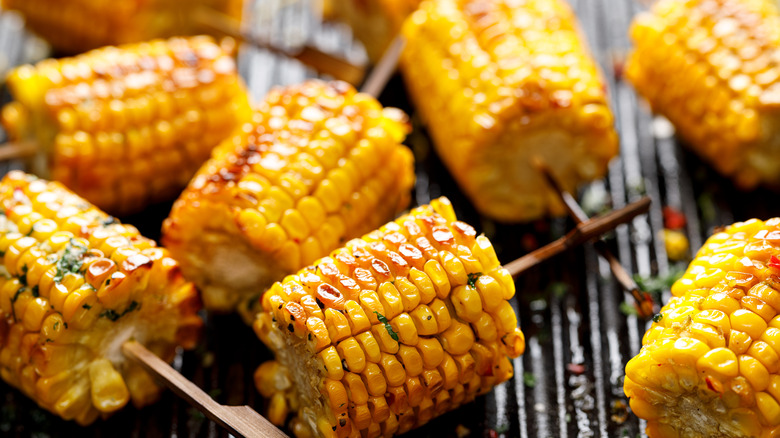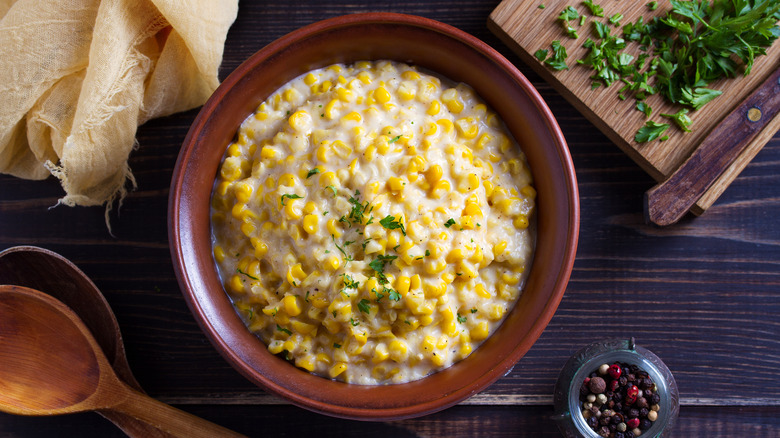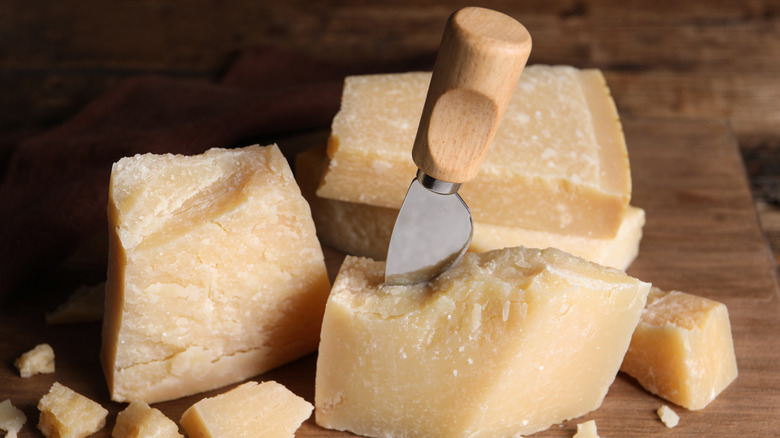Should You Throw Out Leftover Corn Cobs?
Corn's peak harvest season has given way to corn maze season, but you might still come across some fine pickings at the grocery store this time of year if you're lucky. If not, perhaps you saved some of your summer supply in the freezer. Grilling days may be behind us in most parts of the Northern Hemisphere, but there are still countless ways to make the most out of a haul of ears. Many stateside applications might be as simple as boiling cobs until tender and slathering them in butter and salt, which never gets old.
But while corn is often associated with American cuisine, it originated in the teosinte grasses of Mexico — albeit in a much tinier form — some 7,000 years ago, per North Dakota State University. To honor its roots, you might be partial to the classic Mexican street dish elote. Or, if you're looking for something sweet, maybe you'd prefer to grind up the kernels in a mill for homemade cornbread.
Whatever route you choose, every path in the maze of corn recipes is sure to be delicious. But what should you do with those cobs once they've been stripped of their kernels? Whatever you do, don't toss them in the compost bin just yet.
Those cobs are packed with flavor
Just like the salty, umami goodness that resides in cheese rinds (more on that later), the skeleton of your corn cob is a veritable bombshell of flavor, thanks to the milky liquid that clings to its craters. When you've gnawed off its juicy kernels, give it a rinse and consider it the secret ingredient in your next batch of corn chowder or Columbian Ajiaco soup. According to The Healthy, simply simmering raw or cooked corn cobs in salted water can make for an easy corn broth. Use it as a base for corn chowder or any number of dishes, from boiled grains to blanched vegetables. Likewise, if you still have your corn husks, you can leave them to dry in the sun for a few days and use them to wrap tamales.
In addition to stock, FoodPrint suggests using corn cobs for jelly by simmering them with powdered pectin and sugar. The site also notes that cobs do wonders for boosting the flavor of poaching liquid, whether you're working with fish or poultry. Of course, if you're maxed out on corn flavor, you can even use dried-out cobs to scrub your pots and pans.
Do the most before you compost
After you've polished off a hunk of Parmigiano Reggiano (or your other favorite hard, granular cheese), don't do away with the rind. Instead, per Today's Rebecca Firkser, use it as a base for soups, stews, broth, and any other savory dish that bubbles and simmers by tossing it in the pot with your other ingredients. Until she's ready to use them, Firkser puts leftover rinds in an airtight container and stores them in the freezer. The same storage method would likely work for your corn cobs if you're not ready to repurpose them right away.
To make a simple parmesan broth, she says to add a pound of so or rinds to a stockpot "with an olive-oil browned onion" and half a head of garlic, plus whatever other alliums and aromatics suit your fancy. Then, fill the pot with "a couple quarts" of water, a handful of peppercorns, and your favorite woody herbs. She simmers the broth until it's "reduced and deeply flavorful" before pouring it through a strainer. She doesn't say anything about adding a leftover corn cob to the broth, but we'd certainly recommend it.


